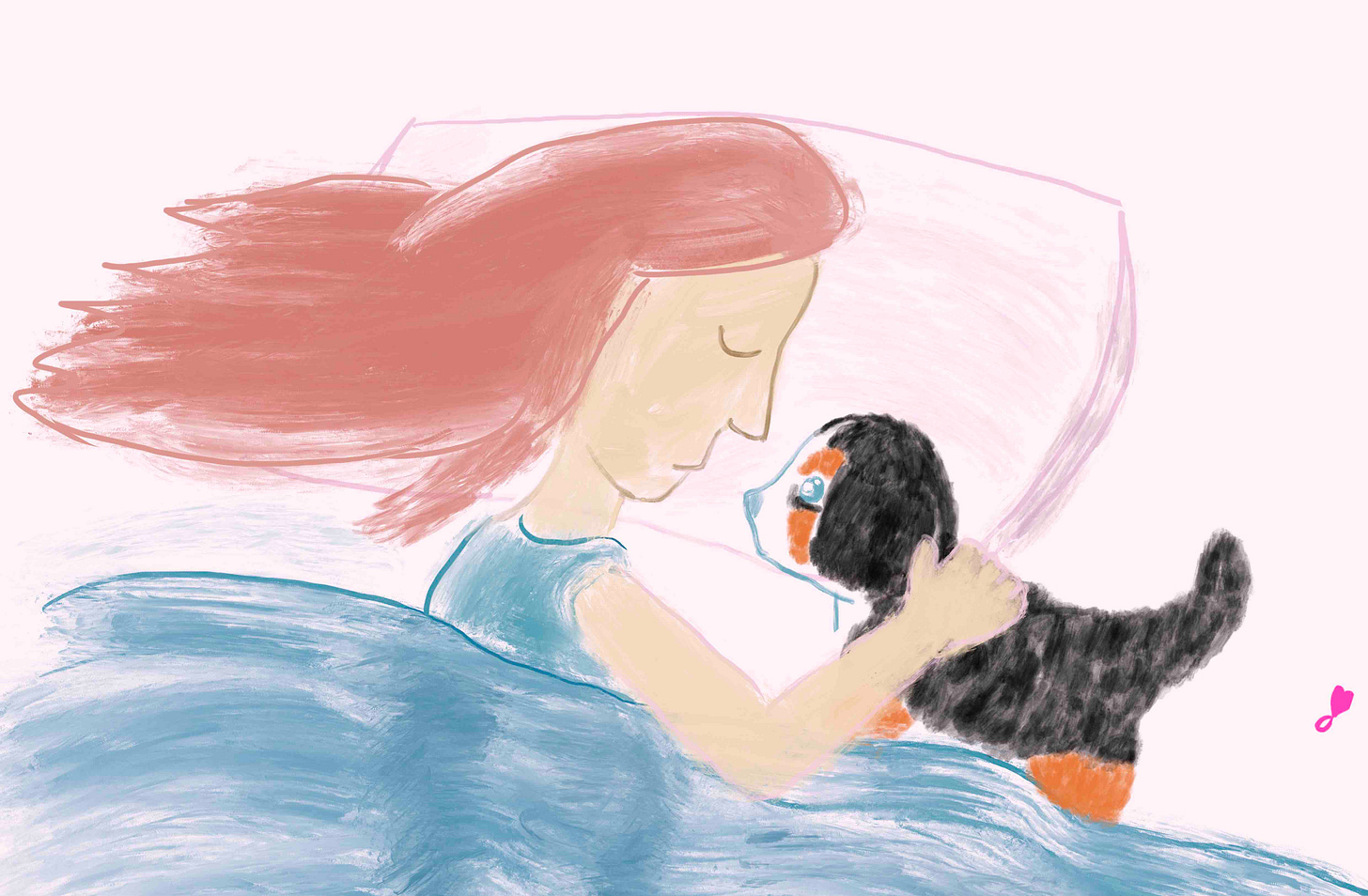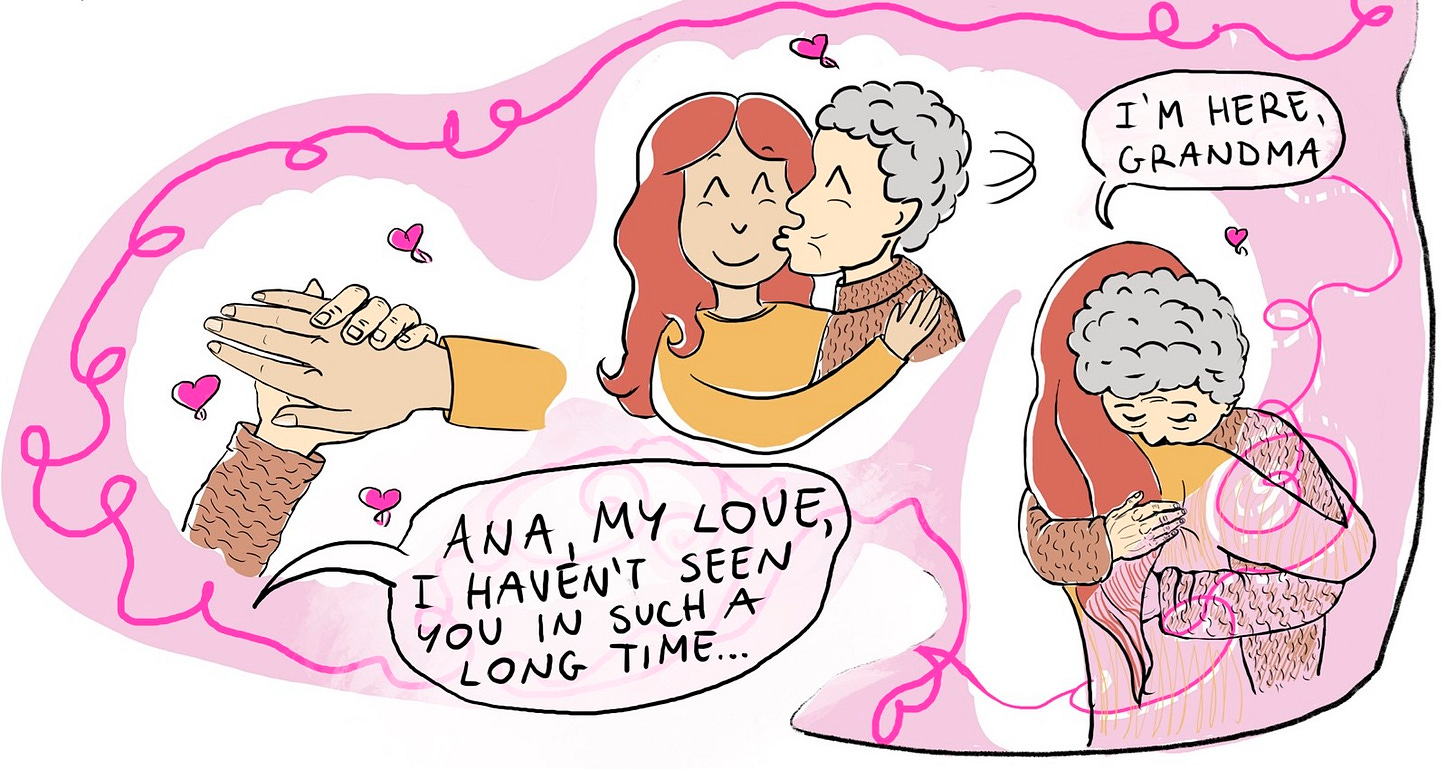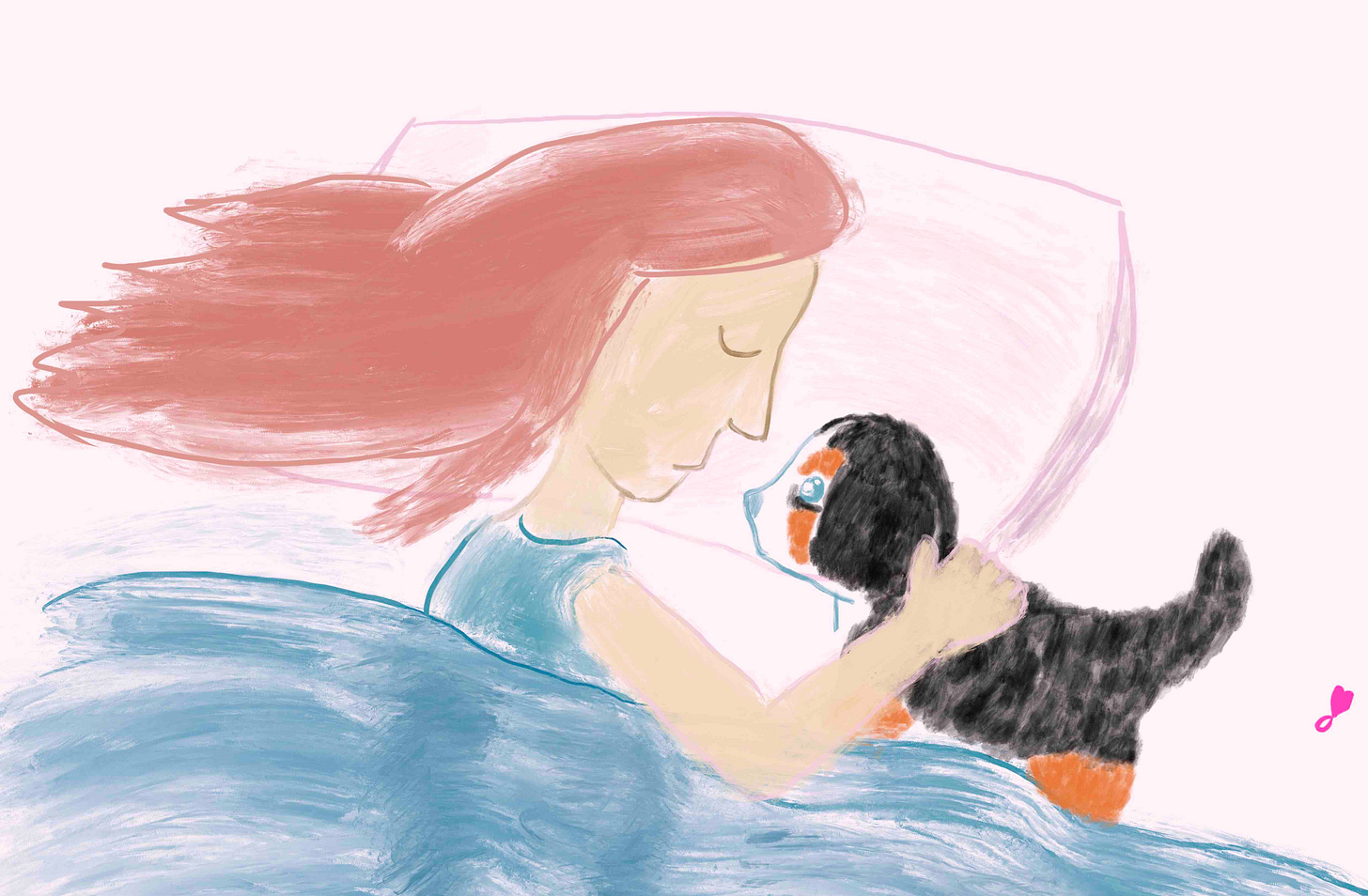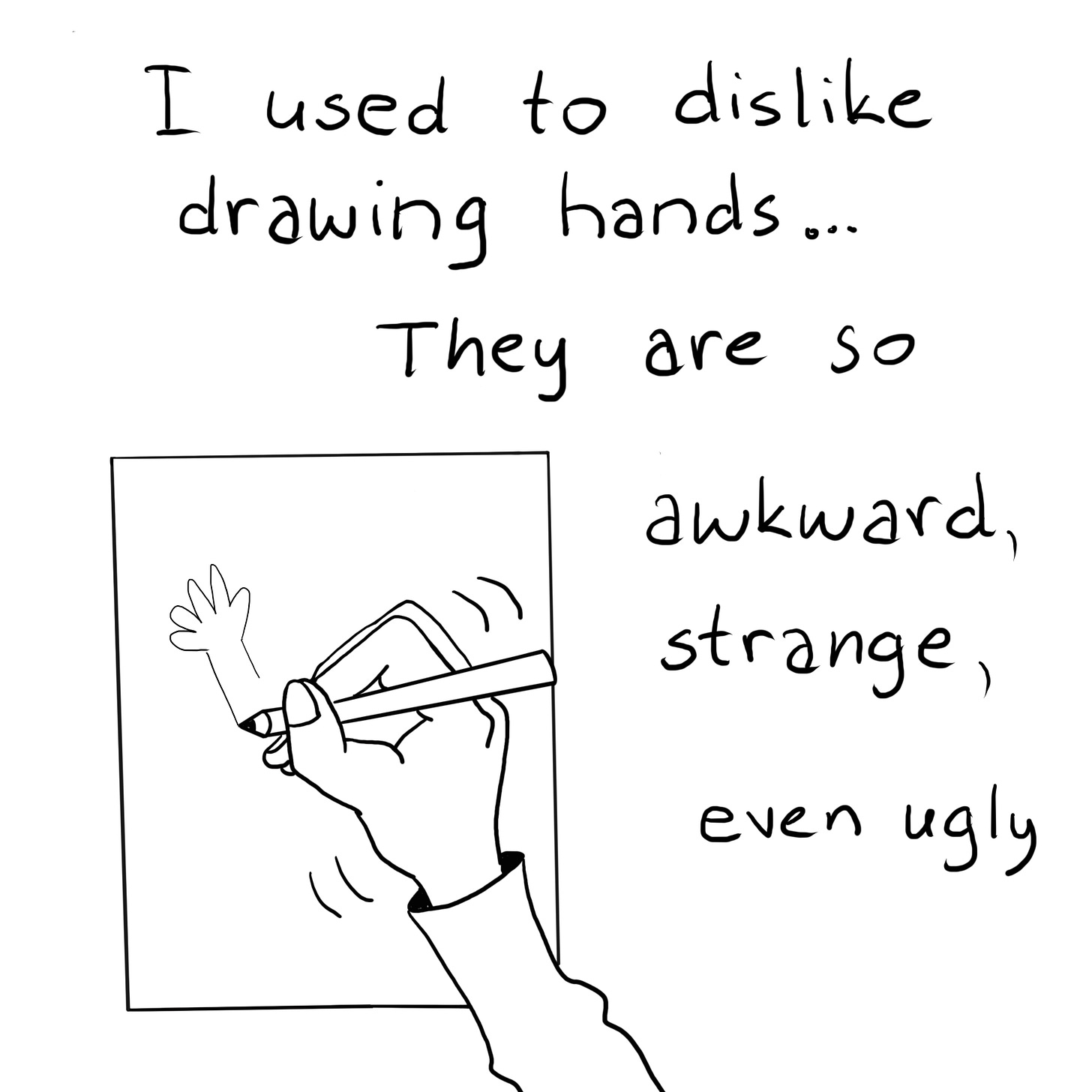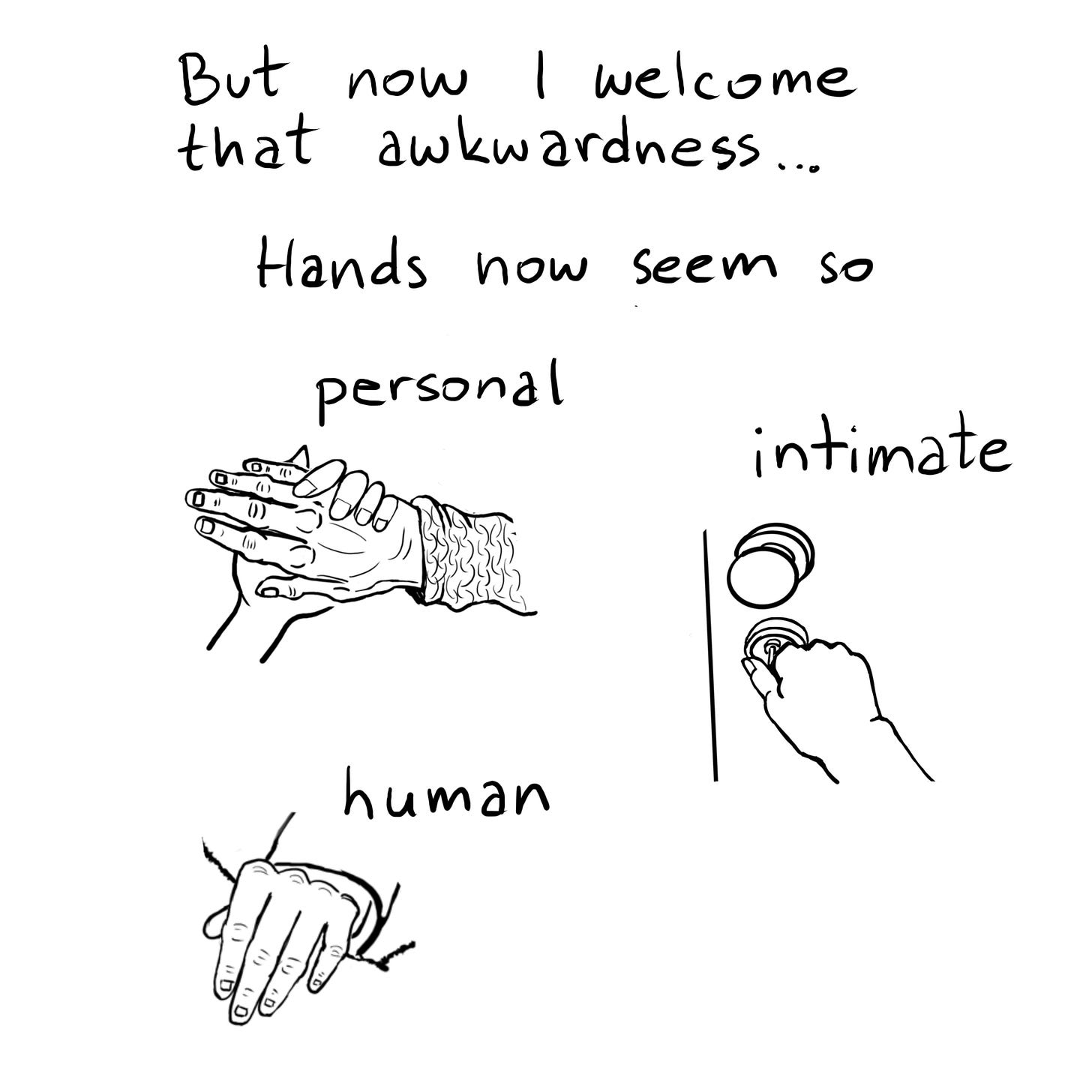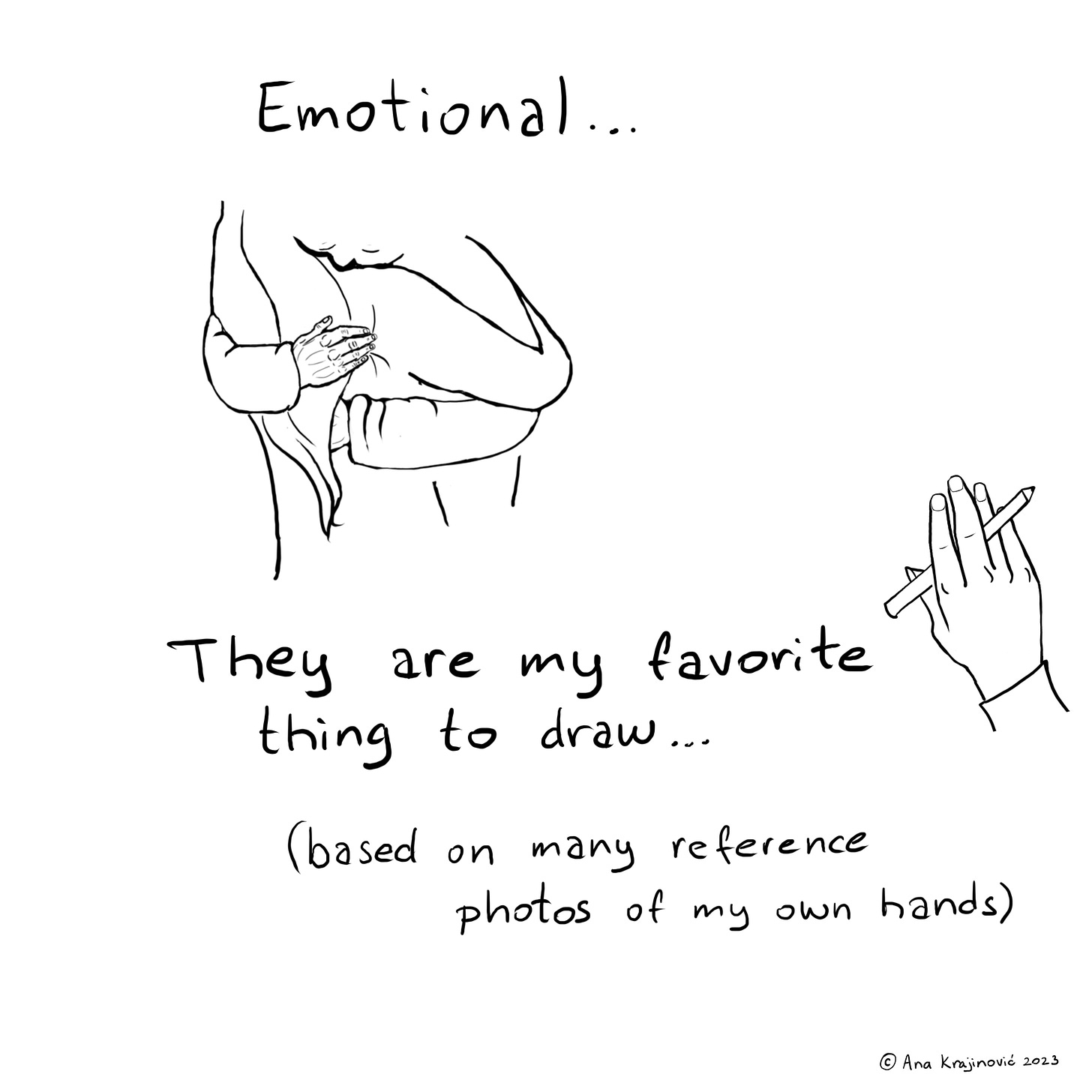Dear readers,
I am aware the title might sound a bit indulging, but bear with me because we are going deep into real-life lessons about mental illness, moving on, and seeing beauty in life and drawing, with a new comic at the end. Here are 3 unexpected truths I learned from creating “Bleeding hearts”.
If you haven’t read the comic yet, here it is:
And for all my Croatian subscribers, this is the Croatian version of the comic (hrvatska verzija na ovom linku):
https://medium.com/bedtime-stories-for-adults-and-children/bakina-srca-e0ee5855f889
1. Sometimes the only thing we can do is to be there for each other (in the ways we are able to).
Whenever I used to think back at the time with my grandma, I often had this feeling of “lost time”, as in there was more time I could have spent with her, I could’ve visited more during the pandemic, my visits could have been longer, I could have done more to treat her dementia… and also something I literally had no control over… 7 years of not seeing her because of the war when I was a child. Many of these thoughts are still vividly present in my mind (and inspiring comics to come), but crucially, I have finally accepted that sometimes the best thing you can do is to be there for the other person in the ways you are able to.
When your loved one has dementia, there isn’t much you can do to treat the illness, and sometimes you can’t even stay with them for long, but when you are there, you can give them support and love in the ways you are able to. I will be forever grateful that I could spend those last 3 weeks with grandma, not least because of the circumstances that were outside of my control (it was possible to travel despite the pandemic, I could afford the trip and accommodation, my job allowed me to take time off…).
When it comes to supporting your loved ones with mental illness, this idea of “just being there” is very powerful. Mental illness at its worst is like being stuck in a bad dream and not being able to wake up. The only thing we can do to support a person in this state is to be there, reminding them of who we are and our love, trying to make it a good dream, and being there for them when and if they wake up from it.
2. “Moving on” sometimes means “staying in” with your feelings.
We often equate moving on with forgetting or letting go of our feelings. This strategy has never worked for me and I see now that I have always done the exact opposite. I choose to stay in with my feelings, not in a bad ruminating way, but simply listening to them and letting them talk to me. I love taking inspiration from plunging deep into the feelings that make me equal parts uncomfortable and in awe of life. And here I’m not referring only to the inspiration for writing stories, for me this is the source of inspiration and motivation for wanting to be alive. Without the vastness of these emotions, I can hardly imagine other experiences that could propel me to do anything.
But also, this is my ADHD brain speaking, I thrive on stimulus and intense feelings, especially those that clash majestically like grief and love. Only these feelings can fuel my understanding and appreciation for life. I can only appreciate life if I can keep feelings that make it worth living. “Moving on” never means letting go in my book.
3. Weird can be beautiful.
Being an ADHDer, I find it really hard to invest time in learning new skills that I cannot immediately apply. And when it comes to drawing, that’s a bit of a funny situation, because I do want to draw but I just don’t want to practice for “practice’s sake”! Creating “Bleeding hearts” with the story I care about was the only way I could motivate myself to draw regularly. And it worked.
The things that I used to fear drawing, I now anticipate with eagerness. So, what changed? Well, I don’t see hands as a part of the body with weird hard-to-draw shapes anymore. I see their meaning, which invites me to draw that meaning in their shapes. Every time I am drawing a hand, I think about every knuckle, every bend, and the delicate infinite possibilities a finger can be placed in to reflect exactly that feeling at that moment in time. Hands are not an anatomical feature anymore, they are an essential part of the story.
The fingers are not meant to be smooth and silky, they are just what they are, they grab things and move around in weird ways. I'm not yet very skilled at drawing hands (but also who is?!) but ever since I've had to draw many hands in my comic, I've started to appreciate the beauty of this hand awkwardness and how much they can bring to the storytelling. Regardless of the amount of detail you put into it, a hand can tell us a lot about who the character is and how they are feeling.
Thank you for reading,
Until next time,
Ana




